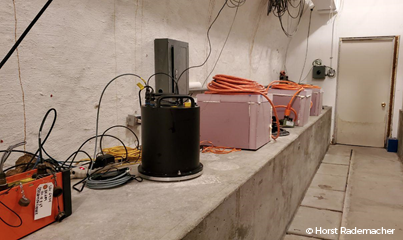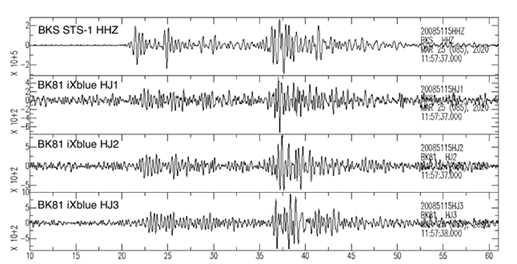- Photonics & Space
blueSeis-3A, iXblue rotational seismometer at Berkeley Seismological Lab
The blueSeis-3A rotational seismometer developed by iXblue, a high-tech company specializing in the design and manufacturing of innovative solutions for navigation, positioning, geophysical and acoustic imaging markets, was recently installed successfully at Berkeley Seismological Laboratory (BSL), in California for evaluation until June 2020.

The System is set-up in the Byerly seismographic vault (part of the regional Berkeley digital seismic network) and is collocated with standard seismometers for 6 degrees of freedom computation. Since its installation late March, blueSeis-3A has captured interesting data from a few earthquakes at local-to-regional distances.
Based on iXblue’s Fiber-Optic Gyroscope (FOG) Technology, blueSeis-3A is revolutionizing the seismology research community. By measuring the rotational movements (yaw, pitch and roll) of the ground, blueSeis sensor allows for a complete measurement of the seismic wave. iXblue’s FOG is the ultimate precision rotation sensor that uses the path of photons through an optical fiber as its sensing element. By using light for the measurement, the FOG is entirely insensitive to linear accelerations and no cross coupling can happen.
The blueSeis-3A unit installed at BSL benefits from new features, including a better timing accuracy, a 12 to 36V power input and an improved data logger with automatic processing and seedlink server (standard for data transmission in seismology) and standard seismic station channel naming through iXblue web mmi. Due to COVID-19 travel restrictions, configuration and training at the BSL was done remotely by the iXblue Inc team. The sensor is indeed a truly easy-to-install and plug-and-play solution for seismological labs and networks.
“We are very excited to collaborate with iXblue and to have the opportunity to test the blueSeis-3A sensor in our vault”, states, Dr. Peggy Hellweg, from Berkeley Seismological Lab. “Rotational seismic signals indeed are very interesting and characterizing ground motions from complete six components (Z,N,E, and three rotational comp.) provide additional insight into wave propagation from sources and structures.”
More info about blueSeis here.



